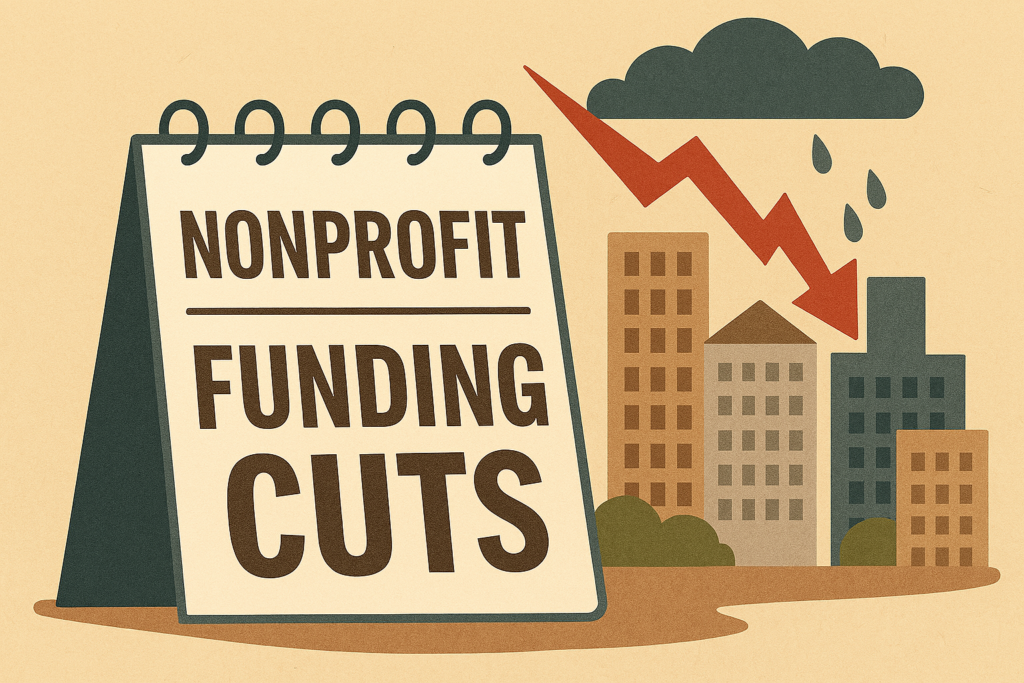Nonprofit Office Tenants Facing the Squeeze: What to Know

Nonprofit Office Tenants are staring down a new and volatile challenge: sweeping federal funding cuts that are beginning to reverberate across New York City’s real estate market. As key contracts are terminated and major grants vanish, many nonprofits face tough decisions—and landlords are likely to feel the impact next.
An Unfolding Crisis in Funding
In the span of just weeks, tens of millions in federal support earmarked for New York-based programs has evaporated. From public health to urban agriculture and emergency services, entire organizations have seen their operational lifelines cut. The effects on staffing, services, and office tenancy are already becoming visible.
For nonprofit tenants, the sudden loss of funding is not just a budgeting issue—it could mean walking away from signed leases, downsizing in haste, or entering high-stakes negotiations with landlords to avoid default.
Why Office Landlords Should Pay Attention
Nonprofits represent an estimated 11% to 13% of all commercial office space in NYC. With over 27,000 nonprofit organizations in the metro area—and one in eight jobs tied to the sector—this isn’t a niche concern. If a portion of those tenants are unable to weather the funding storm, the ripple effect could destabilize leasing activity, particularly in Class B buildings where nonprofits often reside.
Understanding the Landscape for Nonprofit Office Tenants
- Federal Cuts First, State Cuts Next? While many nonprofits lean heavily on city and state funding, that’s no guarantee of stability. If the federal government reduces its allocations to states, trickle-down cuts may follow.
- Commodity Buildings Are at Risk: Nonprofits rarely lease trophy space. Instead, they occupy value-oriented offices in older buildings. These are the very properties still struggling in the flight-to-quality shift.
- Legal Realities Remain: A funding cut doesn’t void a lease. Landlords can—and often will—pursue damages unless tenants proactively renegotiate or seek structured relief.
What Nonprofits Can Do Now
- Open the Books Early: If funding disruption is likely, prepare to share financials with your landlord. Transparency helps open the door to temporary relief or restructuring.
- Renegotiate, Don’t Abandon: Walking away without dialogue can lead to litigation. Instead, request deferred rent, sublease flexibility, or lease extensions with restructured terms.
- Reassess Your Footprint: Is your organization still hybrid or remote-friendly? If so, now is the time to reevaluate space needs and reduce overhead.
- Seek Purpose-Built Space: Mission-aligned real estate partners may offer reduced rents, co-location options, or longer-term flexibility. Explore alternatives beyond conventional landlords.
For Landlords: How to Respond Smartly
- Evaluate, Don’t Assume: Not all nonprofits are equally impacted. Some are expanding. Ask the right questions before making decisions based on assumptions.
- Offer Bridge Terms: Temporary rent relief in exchange for term extensions or marketing partnerships can preserve occupancy and goodwill.
- Reposition Carefully: In the event of vacancy, consider converting former nonprofit space into creative office, flex space, or institutional use to broaden appeal.
The Road Ahead: A Sector in Flux
Not all is doom and gloom. Some nonprofit boards are doubling down, proceeding with real estate acquisitions and multi-year growth plans despite the turbulence. Others are waiting—paused on hiring, leasing, or expansion—until the funding picture becomes clearer.
In the meantime, commercial landlords and Nonprofit Office Tenants alike will need to navigate uncertainty with flexibility, foresight, and trust. Whether through lease restructuring, footprint consolidation, or creative partnership, the goal is survival now—with resilience for what’s next.
Fill out our online form or give us a call today 212-967-2061 — let’s find the right space for your business.


